Shallee
Houses within 10km of this house
Displaying 29 houses.
Houses within 10km of Shallee
Displaying 29 houses.
| House name | Description | |
|---|---|---|
| Solsborough | In 1786 Wilson refers to "Sallborough" as the seat of Mr. Poe. T. Poe was residing at Salisboro in 1837. At the time of Griffith's Valuation (1850) James J. Poe held the property from the Court of Exchequer. The buildings were valued at £41. At the time of the 1852 sale James J. Poe was the tenant holding the property on a 7 year lease pending the cause of Crofts v Poe. Henry H. Poe of Solsborough owned 314 acres in county Tipperary in the 1870s. This house is now a ruin. |
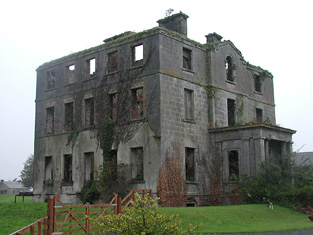
|
| Debsborough | The seat of the Bayly family in the 18th and 19th centuries, occupied by successive John Bayly/Bailys and held in fee. The Ordnance Survey Name Books describe it as "a large demesnewith commodious dwelling house" in 1840. In the mid 19th century the house was valued at £38+ and in 1906 at £65. A building is still located at this site. | |
| Bayly's Farm | The home of Lancelot P. Bayly and his family in the 19th century, held from his brother John. The house was valued at £13.6 shillings at the time of Griffith's Valuation. This house with modern additions still functions as a residence. It also offers guest accommodation. See www.baylyfarm.ie. |
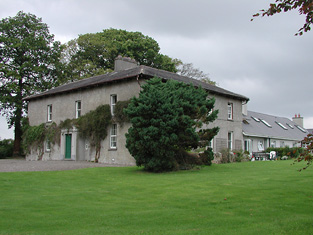
|
| Coolagh | Coolagh is described in the Ordnance Survey Name Books as "a good dwelling house in a small demesne with plantation and ornamental ground" in 1841. It was occupied by John Brindley in the mid 19th century. Valued at £12+ it was held from the Very Reverend Dean Head. It is still extant. | |
| Happygrove House | In 1840 the Ordnance Survey Name Books refer to "Happy Grove" as "the name of the place and residence of Mr. John Brindley" and gives details of the oatmeal mill in the demesne. Samuel Brindley was the proprietor of a corn mill and house at Clonmore in the mid 19th century. He held the property from Lord Dunalley and the buildings were valued at £35. The house no longer exists. | |
| Traverston | Traverston was the seat of the Going family in the 18th and 19th centuries. In 1786 Wilson refers to it as Trevor's-town, the seat of R.Going. It was the residence of Thomas Going in 1814 and 1837. The Ordnance Survey Name Books describe it as "a splendid residence" in 1840. In the mid 19th century Caleb Going occupied the house and held the property in fee. The buildings were valued at £52+. Still valued at £52 and occupied by John R. Lloyd in 1906. John R. Lloyd was the son of Anne, daughter of Robert Going of Cragg, Newport, who, in 1828, married Edward Lloyd of 12 Upper Mount Street, Dublin. John R. Lloyd died unmarried in 1910 and left Traverston to his niece, Ann Norris. This house is now demolished. see http://www.glendafae.com/histories/Going%20of%20TRAVERSTON.pdf | |
| Kilboy | In 1786, Kilboy was described by Wilson as the fine seat of Henry Prittie. Lord Dunalley is recording as resident at Dunally Castle, Nenagh, in 1814. In 1837 Lewis writes that Kilboy, the seat of Lord Dunalley, "was erected about 60 years since". In the mid 19th century it was valued at £76+ and held in fee. This house, which the National Inventory of Architectural Heritage describes as a "detached five-bay single-storey house over basement, built c. 1775" and designed by William Leeson, was destroyed in 1922. A similar house was erected on the site but was demolished in 1955. A smaller house is now located on the site. |
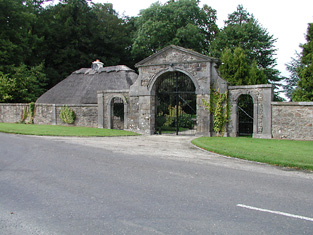
|
| Lissenhall | In 1786 Wilson mentions Lissen-Hall as the seat of Mr. Otway. Mr Thomas Devoy occupied Lissenhall in 1814 and in 1837 Rowan P. Cashel was resident. Margaret Dagg held the house valued at £42.13 shillings from the Honourable Mrs Otway Cave at the time of Griffith's Valuation. Lissenhall dwelling house and 242 acres bought for £5000 by William H. Carrol in 1853. In 1906 the mansion house in Lissenhall townland was valued at £30 and occupied by Alice J. Carroll. This house no longer exists. | |
| Ballintogher House | In 1786 Ballintogher is referred to by Wilson as the seat of Mr. Strafford. Afterwards it was a Crawford property, occupied in 1814 by John Crawford. George Langford of Ballintogher House was the third son of Richard Coplen Langford who, in 1784, married Catherine Cooper Crawford of Fermoyle. In 1828, George married Maria, daughter of the Reverend Henry Bayly of Bayley's Farm, county Tipperary. In 1840 the Ordnance Survey Name Books refer to the house as "the residence of Attorney Langford". By the time of Griffith's Valuation George Langford held Ballintogher and 236 acres in fee. The house was valued at £20. A building is still located at this site. | |
| Tullahedy | Dominick Meade of Tullaheady, county Tipperary, died in 1717. Edwin Sadleir held a house valued at £15+ and 64 acres at Tullahedy from John O'Dwyer at the time of Griffith's Valuation. By 1906 Tullahedy valued at £16 was occupied by the representatives of Thomas J.R. Miller who held over 500 acres of untenanted land there. The Riggs Millers are still resident at Tullahedy. The Ordnance Survey Name Books record the existence of Tullahedy Old House, "almost in a state of ruins, occupied by a herdsman, but formerly a good dwelling house occupied by the Tumpane family". This property is shown on the 1st edition Ordnance Survey map at R841771. | |
| Greenhall | A home of the White family in the 18th and 19th centuries, In 1786 Wilson refers to Greenhall as the seat of Mr. White. Lewis records H. White of Green Hall in 1837. The Ordnance Survey Name Books refer to it as "a neat dwelling house, the residence of H. White" in 1840 though it implies that "Counsellor Grady" was the proprietor. James Grace was resident in the mid 19th century when the house was valued at £12+. A building is still located at this site. | |
| Cranna | The original home of the Going family in county Tipperary, inhabited by the Reverend John Going, eldest son of Richard Going of Birdhill in 1814 and by his son Charles in 1837 and at the time of Griffith's Valuation, when the house was valued at £23+. Buildings are still located at this site. | |
| Bushfield | In 1786, Wilson refers to Bushfield as the seat of Mr. Cashell. Francis W. Cashell was living at Bushfield, Nenagh, in 1814 and J. Philips in 1837. Henry Phillips was the occupant at the time of Griffith's Valuation when the house was valued at £14 and held from Henry Cashin [Cashel]. This house appears to be still extant. see http://humphrysfamilytree.com/Cashel/henry.bushfield.html | |
| Mountphilips | In 1786 Wilson refers to Mount-Phillips as the seat of Counsellor Phillips. Mount-philips was the home of William Philips in the first half of the 19th century. In the early 1850s the house was valued at £21+ and held in fee. By 1906 it was valued at £17 and occupied by John P. Phillips. This house no longer exists. Wilson also makes reference to another Phillips residence, at Killeen, nearby. | |
| Castle Waller | The seat of the Waller family in the 18th and first half of the 19th century, occupied by Richard Waller in 1814 and in 1837. In 1840 the Ordnance Survey Name Books reported that is was then uninhabited. Thomas Mullowney [possibly the youngest son of Croasddaile Molony] was the occupant at the time of Griffith's Valuation when the buildings were valued at £17. Castle Waller was occupied for sometime in the 1850s by William de Rythre who married Blanche Waller. In the 1870s Michael Moloney of Castle Waller owned 5 acres. The building was in ruins by the early 20th century. | |
| Rockvale | Reverend M. Moore was the proprietor of Rockvale in 1837. In 1840 the Ordnance Survey Name Books note it as the seat of Rev. A. Armstrong and describe it as " a commodious dwelling house". Francis J. O'Neill was the occupier in the early 1850s. He held the house, offices and flour mills, valued at £61 from John F. Waller. A house is still located at this site. | |
| Oakhampton | In 1786 Wilson mentions Oakhampton as the seat of Joseph "Phelps". John Philips was resident here in 1814 and S.W. Phillips in 1837. Lewis writes that it was the property of Lord Bloomfield. In 1840 the Ordnance Survey Name Books record Oakhampton as " a good dwelling house, the residence of Mr. S. Phillips". The Reverend Anthony Armstrong was the occupant at the time of Griffith's Valuation, holding the property from Lord Bloomfield. The buildings were valued at £25+. Reverend Anthony was still resident in the 1870s when he owned 504 acres in county Tipperary. Reverend A. Armstrong was rector of Killoscully and, in 1835, married Anna Going of Ballyphilip. Oakhampton is still extant. |
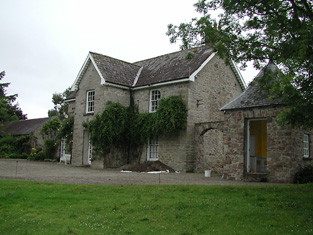
|
| Ciamaltha House | Builtby Lord Benjamin Bloomfield, ADC to George III, as a sporting lodge, the Ordnance Survey Name Books describe it as "recently erected" in 1840. Lewis writes in 1837 "Lord Bloomfield is building a handsome lodge in the Elizabethan style and has laid out an extensive nursery from which considerable plantations have been made on the surrounding mountains". At the time of Griffith's Valuation this house was valued at £58+ and was held in fee by Lord Bloomfield. The 1906 report on Untenanted Demesnes claims that the house was occupied by his daughter, the Honourable Harriott Kingscote, who, in 1833, had married Thomas Henry Kingscote of Gloucestershire. However, family sources indicate that the house was actually occupied in the early 1900s by her grandson, Col. Randolph Kingscote, who continued to live there until 1922. The house is still in use as a residence. |

|
| Fort Henry | Fort Henry, overlooking the Shannon River, was the residence of Stephen Hastings in 1814 and of Finch White in 1837. Earlier, in 1786, Wilson had also noted it as a Hastings residence. At the time of Griffiths Valuation, Finch White held the house from Stephen H. Atkins. It was valued at £28.15s. Finch White was related to the Atkins through marriage with a member of the Gelston family. In 1906 this house was in the possession of Frederick C.Henry. In 1840, however, the Ordnance Survey Name Books had also noted that J.J. Henry was the proprietor. It is still extant. | |
| Gortna House | This house was located close to the shore of the River Shannon and is marked on the first edition Ordnance Survey map and the later 25 inch map as Gortna House. Lewis records H. Franks as resident at Shannon View in the parish of Templeachally. Henry Franks occupied a house valued at £12+ and held from Stephen H. Atkins at the time of Griffith's Valuation. Henry Franks was married to Elizabeth daughter of Ringrose Atkins. There are still buildings at this location. | |
| Tullamore Park | A late 18th century house built for Edward Finch. It was the seat of the Finch family in the 19th century, occupied by William Finch in 1837 and at the time of Griffith's Valuation, when the house was valued at £27 and held in fee. Sold in the early 20th century to the Kennedy family. This house is still in use as a residence. |

|
| Kilcolman | The original residence of the Finch family in the 18th century, Wilson refers to it as the seat of Mr. Finch in 1786. It was occupied by John Finch in 1814 and by Mrs Finch in 1837 and 1840. Leased by the representatives of Mrs W. Finch to Edmund Parker in the mid 19th century when the house was valued at £45. William Finch of Kilcoleman owned 412 acres in the 1870s. Charles Finch occupied this house in 1906. This house no longer exists. | |
| Ryninch | Lewis records J. O'Brien of Ryninch and Jeremiah O'Brien held a house valued at £10 and 115 acres from Francis Spaight in the mid 19th century. There were quarries in this townland. | |
| Monroe | Monroe was the residence of Robert Young in 1814 and Lewis describes it as the "neat cottage residence" of R. Power. Pierce Power held the property in fee at the time of Griffith's Valuation when the house was valued at £37+. Occupied by Hamo Massy Power in 1906. Yard buildings remain at this site. | |
| Tulla | Tulla House was the home of the Carroll family in the 19th century. William Carrol was resident in 1814 and Major General Sir Parker Carrol in 1837. Captain W. H. Carrol held the house valued at £20+ and townland in fee at the time of Griffith's Valuation. The house valued at £18 was still occupied by the Carrols in 1906. A house is extant at the site. | |
| New Ross | In 1786 Wilson writes that New Ross was the seat of Mr. White. The property is labelled "site of New Ross House" on the first edition Ordnance Survey map of the 1830s. The Ordnance Survey Name Books record that "the site of this old house is all that can be found at present .....It was once a place of some account being the residence of Bishop Buscow and afterwards of the White family ...they lived here til about 1790". This townland was in the possession of Bolton Waller at the time of Griffith's Valuation. | |
| Silvermines Cottage | In 1840 the Ordnance Survey Name Books describe Silvermines Cottage as "a neat and comfortable cottage, the residence of Rowan P. Cashell". He was also the occupier at the time of Griffith's Valuation, leasing from Lord Dunalley's estate. The property was valued at £10 15s. The National Inventory of Architectural Heritage states that it was, for a time, the mine manager's house, for the nearby mines. Silvermines Cottage is still extant and well-maintained. |
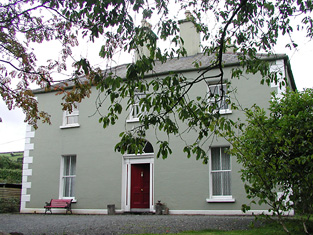
|
| Smithville [Yewstown House] | In 1840 the Ordnance Survey Name Books refer to Smithville "a commodious dwelling house", the residence of Mr. Boucher, though Peter Homes is mentioned as the proprietor. At the time of Griffith's Valuation, Aquilla Smith, MD, was leasing a property from the Holmes estate valued at £38. In addition Smith was leasing another property, valued at £15, to the Nenagh Poor Law Guardians, for use as an auxiliary workhouse. By the publication of the 25-inch Ordnance Survey map of the 1890s, a more substantial house at the site has become known as Yewston House. The building at the site now is known as The Manor and is in use as a nursing home. |
![Photo of Smithville [Yewstown House]](https://landedestates.ie/storage/img/orig/2843.jpg)
|
| Annebrook House | The Ordnance Survey Name Books reported in 1840 that Annebrook House was the residence of Henry Young but that P. Holmes was the proprietor. At the time of Griffith's Valuation, Henry Young was leasing the property, valued at £10+, from the Holmes estate. Buildings are still extant at the site including the remains of substanial farm buildings associated with the farm which is mentioned in the 1840s. |

|

